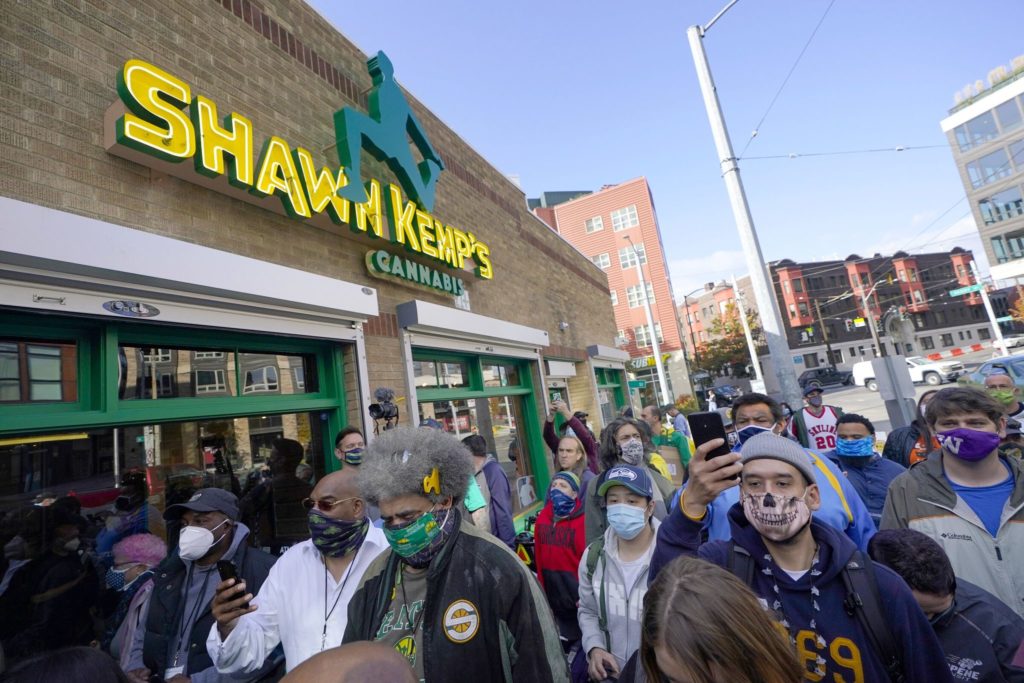In the Seattle area, the popularity of cannabis products easily exceeds that of cigarettes, e-cigarettes and vaping, according to new data from market-research firm Nielsen.
In surveys conducted between March 2021 and January 2022, around 865,000 people age 18 and older in the Seattle market area — about 20% of the adult population — said they had used cannabis (including edibles) in the past 30 days. Only around 560,000 (13%) had smoked cigarettes or used one of the newer nicotine-based alternatives, e-cigarettes and vapes.
The one place where cannabis outpaces nicotine by an even wider margin? It’s not exactly a surprise. In Portland, about 21% of adults used cannabis compared with 13% who smoked or vaped nicotine products, for a gap of 8 percentage points. The San Francisco market area ranked third, with a gap of around 6 points.
Nielsen surveyed around 4,500 adults in the Seattle market area from July 2021 to July 2022. The Seattle market area is significantly larger than our metro area, and covers most of the Puget Sound region.
The areas where nicotine products were most popular were in the Southeast, including metros in some leading tobacco-producing states. In Charleston-Huntington, West Virginia, and Knoxville, Tennessee, 25% of adults used cigarettes, e-cigarettes or vapes in the past 30 days. In Knoxville, these nicotine products had a 17 percentage point advantage over cannabis products.
Cannabis was more popular than, or equal in popularity to, nicotine products in just 16 of the 83 market areas surveyed. Most of these 16 markets are located in states where the recreational and medical sale and use of cannabis was legal at the time of the survey — but not all.
For example, cannabis was slightly more popular in the Providence market area, but Rhode Island’s first recreational cannabis shops just opened in December, which is after the Nielsen surveys were conducted. And Utah only allows the use of medical marijuana, but the use of cannabis was equal to that of nicotine products in the Salt Lake City metro, at about 8% of adults for both.
The popularity of cannabis has soared as the number of states allowing its medical and recreational sale and use has grown over the past decade. Washington and Colorado were, famously, the first states to legalize the sale and use of recreational cannabis in 2012.
Cigarettes have been on the opposite trajectory. Decades ago, it seemed like almost everyone smoked. But cigarette use has been on a steady decline as public awareness of its dangers has grown.
A Gallup poll last year showed that for the first time, more Americans used cannabis than cigarettes — but that did not include vapes and e-cigarettes, which have grown in popularity as they are often viewed as less harmful alternatives. Gallup also found Americans do not view cannabis to have as negative an impact on individuals as cigarettes.
Data on the demographics of cannabis and nicotine users in the Seattle area show there were a lot of similarities between the two groups. The biggest differences were in age and educational attainment.
According to Nielsen, the average adult age in our market is around 44 for both cannabis and nicotine use, with younger adults more likely to use either — among those under 35, 23% used cannabis products and 16% smoked cigarettes or vaped. Among those 50 and older, 14% used cannabis and 10% used nicotine products.
There wasn’t much difference between men and women in the use of either cannabis or nicotine products (men were just slightly more likely to use both). There also was no significant difference in the use of cannabis or nicotine products among racial/ethnic groups.
Seattle-area adults who have not attained a four-year college degree were more likely to either use cannabis or nicotine products than those who did have a college degree. In particular, adults without a college degree were more likely to smoke cigarettes or vape, at about 17%, compared with just 5% of college grads (and about 21% of those without a college degree used cannabis products, compared with 14% of college grads).
H/T: www.seattletimes.com



